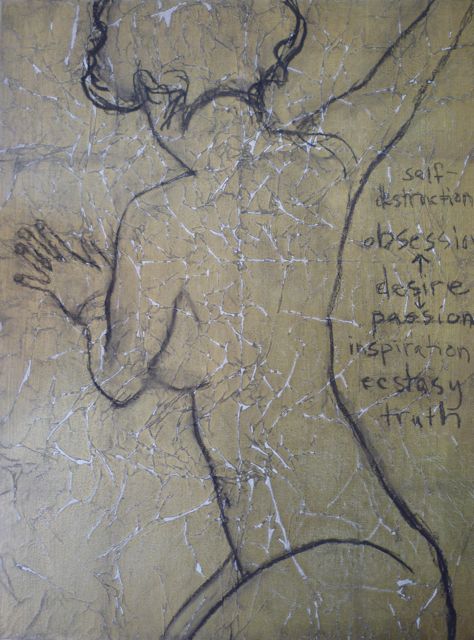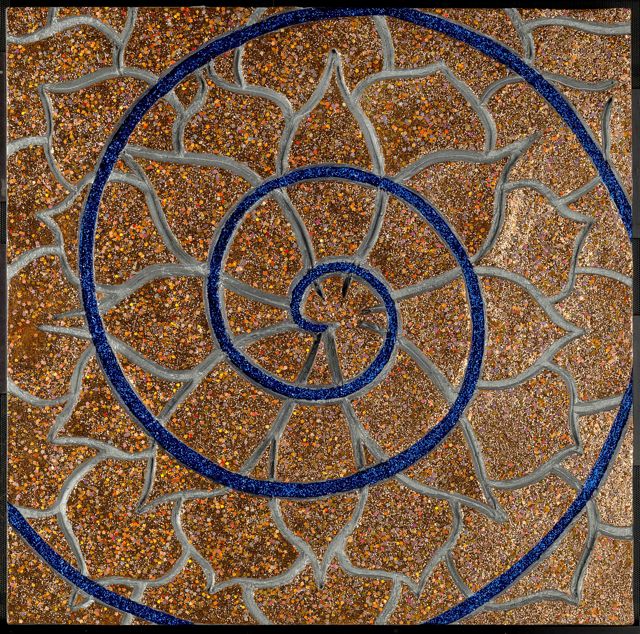
Bradley Rubenstein: You are showing paintings and drawings in your exhibit. Can you give us a little backstory -- where you are from, things like that?
Julie Tersigni: I was born in Akron, Ohio. But I’ve been in N.Y.C. since 1982. It was possible to survive in Manhattan on very little money then! I worked as a model for many artists: Eric Fischl, Audrey Flack, Alex Katz, Robert Kushner, David Salle, Raphael Soyer, to name a few. I was able to see how professional artists work. It made me want to use my own figure as the "ground" of the large collages I was making at the time. My photographer boyfriend took photos of me in poses I thought I could work with. Then I would adhere photocopies of them to the canvas, and paint and draw over them. And, these many years later, I used those photos as the source for three of the drawings in this show.
BR: So you are both the artist and the subject of your work…
JT: It may seem unusual, but it was fun to draw myself that way!
BR: Those drawings have a weathered-looking ground, a nice aged effect…
JT: I glued wrinkled tissue paper to canvas, sanded it, applied a coat of clear acrylic medium, drew on top of that with charcoal, and then sprayed the canvas with fixative…on my roof…on a windy day.
BR: What’s the list of words on "From Desire" (image above left, 2012, charcoal and paper on canvas, 24" x 18") about? It looks like a diary or journal entry.
JT: It’s a diagram. I was listening to an interview with Don Miguel Ruiz, who was talking about desire as the starting point. From there, you can get obsessive, which can lead to self-destruction. Or you can go from desire to passion, inspiration, ecstasy, and truth. Although I think art always involves an element of obsession…
BR: Definitely. The paintings look like mandalas, or something meditative. Kind of a contrast to the drawings. What are they about?

JT: Some time ago I painted a flower that seems to extend past the canvas edge. Then I cut a spiral into it. Since then I’ve done many variations on this theme I call "from here to infinity." The paintings in this series do have an expansive, meditative quality, I think.
BR: Who or what are some influences? Not just artists, but what do you draw upon for the inspiration for the work?
JT: I studied Nietzsche in college, and his philosophy of art has informed my life ever since. He says, "…for it is only as an aesthetic phenomenon that existence and the world are eternally justified…."
Do you remember when both William Kentridge and Marina Abramović were at MOMA? I was in heaven. I can't remember how many times I went. I get excited by Dubuffet's exuberance, Klee's voracious appetite for unusual materials, and Twombly's childlike scrawls and use of language.
Also, I spend time in nature, study yoga and meditation, and go to hear live music.
BR: What are you working on now?
JT: I have some little 8" x 8" canvasses that I’m adding texture to in preparation for the glitter and mica layers. And I'm stretching a 36" tondo and two 36" x 24" canvasses… because those are the materials I have at hand. I have little to no idea what’s going on them…stay tuned.
